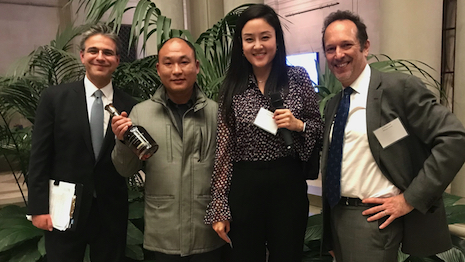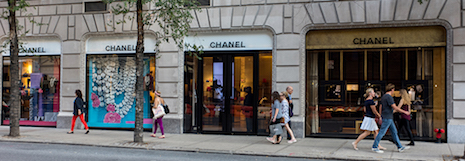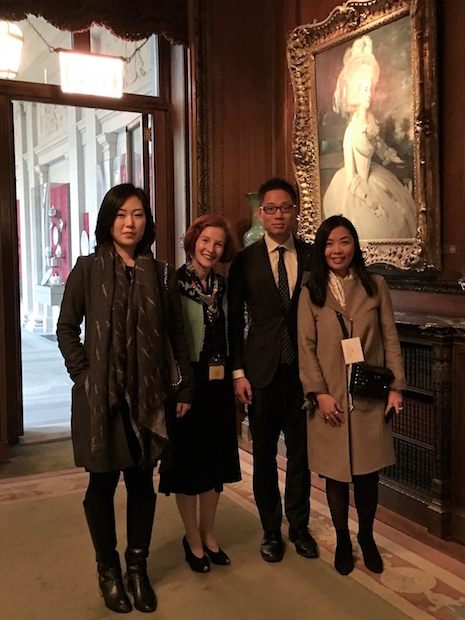- About
- Subscribe Now
- New York, April 5, 2025
December 5, 2018

 Madison Avenue Business Improvement president Matthew Bauer with Chinese tour guides at The Frick Collection museum on Fifth Avenue in New York. David Becker, CEO of Attract China, is at the opposite end
Madison Avenue Business Improvement president Matthew Bauer with Chinese tour guides at The Frick Collection museum on Fifth Avenue in New York. David Becker, CEO of Attract China, is at the opposite end
By David Becker
Do luxury brands really know the Chinese customer, or do they simply view them as walking dollar signs? The numbers are eye-popping, with Chinese accounting for 32 percent of the $319.6 billion spent on luxury goods worldwide and only 10 percent of those sales occurring in China.
But when I talk to luxury brands, many believe that they do not need to adjust their marketing channels, in-store engagement or product mix for Chinese customers even though Chinese life experiences and demographics are vastly different from buyers in the United States or Europe.
At a recent meeting of luxury retailers, some asked about targeting Chinese millionaires and billionaires. But the reality is, it is the fast-growing upper middle class that represents the largest and most significant opportunity.
According to a McKinsey report, the “upper middle class is poised to become the principal engine of consumer spending over the next decade” with a projected 757 million Chinese in the upper middle class by 2022, or 49 percent more people than the entire population of the European Union.
Let us dig deeper.
China’s post-90s generation is the one to watch
It is not just the upper middle class who are important economic drivers, but children who were born between 1990-1999 or the post-90s generation.
Compared to their post-1980s counterparts, the post-90s generation grew up in an affluent, digitally connected China where personal fulfillment counts more than anything else.
Typically, these are single children backed with family money, many still living at home, at least until they get married. This demographic has been buying luxury brands from a young age.
According to a Bain survey, mainlanders start young and buy more frequently, or about eight times per year, with 249 million purchasing products through cross-border ecommerce or “haitao.”
For well-established luxury brands that strive to remain relevant such as Gucci and Chanel, business will remain strong. But this is also an opportunity for brands with a unique story, think MacKintosh or Zero Halliburton, or shopping centers such as New York’s Brookfield Place to introduce their brand to a new generation of Chinese shoppers who are expanding their retail horizons.
Introducing new brands, new experiences
Often the initial introduction to new brands and destinations is during a visit to the United States or Europe. That is where shopping districts such as New York’s Madison Avenue have an opportunity to introduce a new group of shoppers looking for genuine, social media worthy experiences.
While many areas in big cities have become “tourist bubbles” where a visitor only meets locals across the store counter or the hotel front desk, Chinese visitors walking along Madison Avenue can experience a real New York neighborhood: the affluent and elegant Upper East Side.
Rather than sprinting from one attraction to another, Chinese visitors can combine in an afternoon visits to cultural touchstones such as The Metropolitan Museum and the Frick Collection with all the stores they know already including Hermès, Chanel, Coach and Prada, plus hundreds of independent stores and galleries on Madison Avenue that have been there for generations.
 Chanel store on Madison Avenue in New York. Image credit: © Julienne Schaer
Chanel store on Madison Avenue in New York. Image credit: © Julienne Schaer
Chinese travelers use multiple media and personal recommendations to plan their visit
Recognizing the unique experience that Madison Avenue can provide to the Chinese visitor, the Madison Avenue Business Improvement District (BID) has been working closely to make the avenue friendlier for Chinese visitors. It is just not as simple as setting up a WeChat account. In fact, Chinese use multiple media, including social, digital and print as well as recommendations from friends, travel agents and tour guides, to figure out where to go and what to buy.
To that end, Madison Avenue is working first on establishing a brand position around “calm and elegant shopping.” Note in China that the word luxury can have negative connotations akin to being wasteful.
Madison Avenue has taken an integrated marketing approach to reaching Chinese tourists:
 Chinese tour guides at The Frick Collection with Heidi Rosenau, associate marketing director
Chinese tour guides at The Frick Collection with Heidi Rosenau, associate marketing director
Earlier this year, social media superstar Suphy Liu visited New York in the summer to create a city experience video. A post-90s generation traveler with 16 million followers including 9.1 million on Weibo, Ms. Liu was surprised and delighted by how relaxed and easy it was to shop on Madison Avenue. Suphy’s video has already generated more than 1.25 million views, 2,547 likes, 661 comments and 1,039 reposts.
 Social media personality Suphy Liu at the Kwiat-Fred Leighton store during a summer visit to New York's Madison Avenue
Social media personality Suphy Liu at the Kwiat-Fred Leighton store during a summer visit to New York's Madison Avenue
In addition to these new integrated marketing efforts, Madison Avenue has been focused on the Chinese market for some time.
Matthew Bauer, president of the Madison Avenue BID, notes, “Madison Avenue is all about authenticity and service, which are attributes appreciated by luxury shoppers both from the Upper East Side and from abroad. The BID’s efforts to welcome visitors from China, from creating a sister-street partnership with the Bund Association in Shanghai, to partnering on the Madison Street to Madison Avenue Lunar New Year event, complements the long tradition of hospitality created by the storied hotels of Madison Avenue, including The Carlyle, Lowell, Mark, Plaza Athenee and Surrey.”
MADISON AVENUE AND luxury brands now have to build on their base – or, in some cases, lay the foundation for their Chinese marketing program – to attract the customers of tomorrow.
No matter what stage they are in luxury marketers can never rest, nor create a one-size-fits-all approach to reaching Chinese shoppers.
 David Becker is CEO of Attract China
David Becker is CEO of Attract China
David Becker is CEO of Attract China, New York. Reach him at david@attractchina.com.
Share your thoughts. Click here